March 8, 2022.
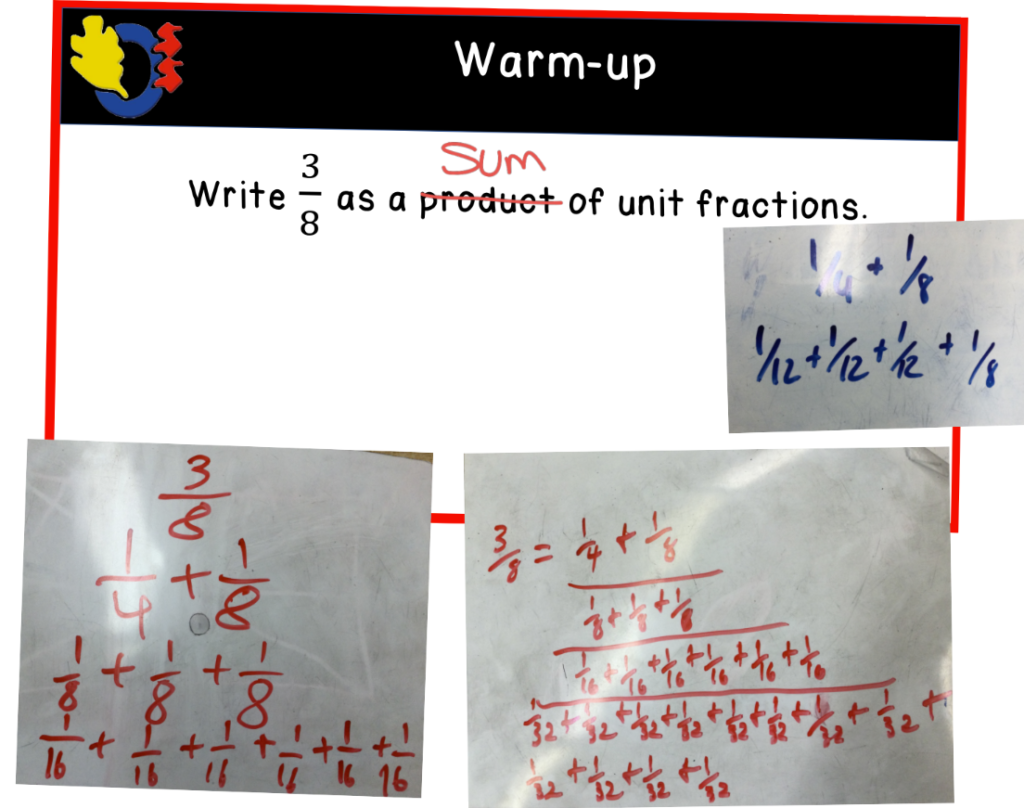
For today’s warm-up, we looked at an example of writing a proper fraction as the sum of unit fractions. My pre-IB class didn’t want to get out the fraction tiles today.
Next, we revisited determining the slope of a line given a graph with the following examples. We drew rate triangles connecting two points that were on nice grid intersections.
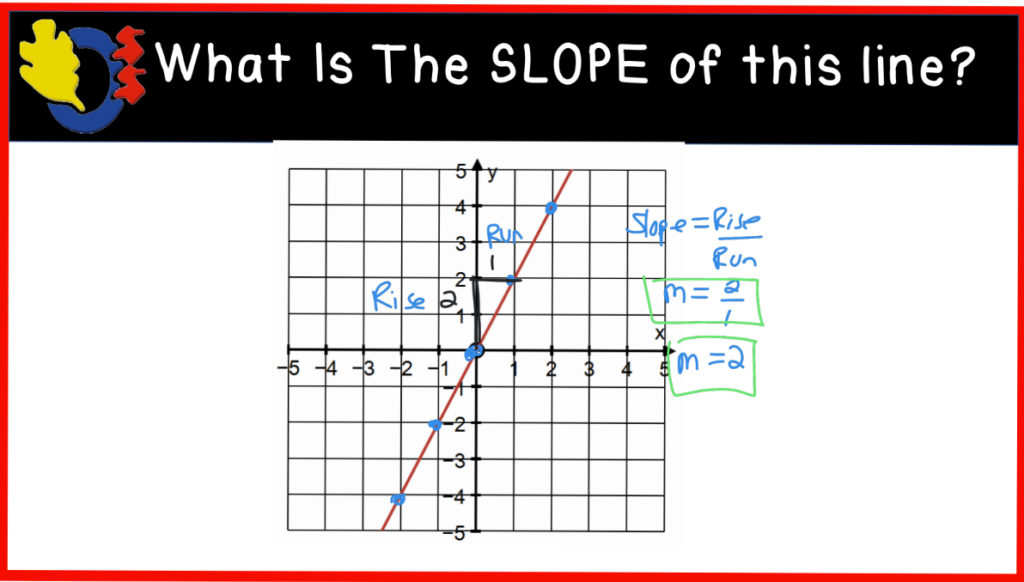
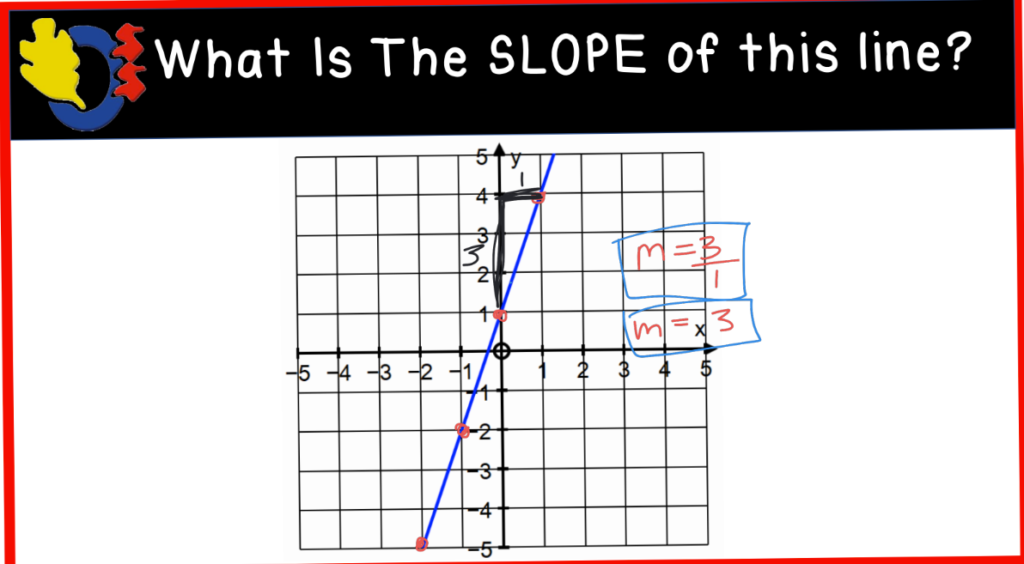

The three examples we looked at all had positive slopes. We talked about how we could choose any two points on the line, that crossed at nice grid intersections, but we would need to remember to reduce our fraction at the end.
Next, we looked at an example that included units on the axes. We discussed that we should include units with our rate of change. In this case, miles per hour or mph would be written after our rate of change.

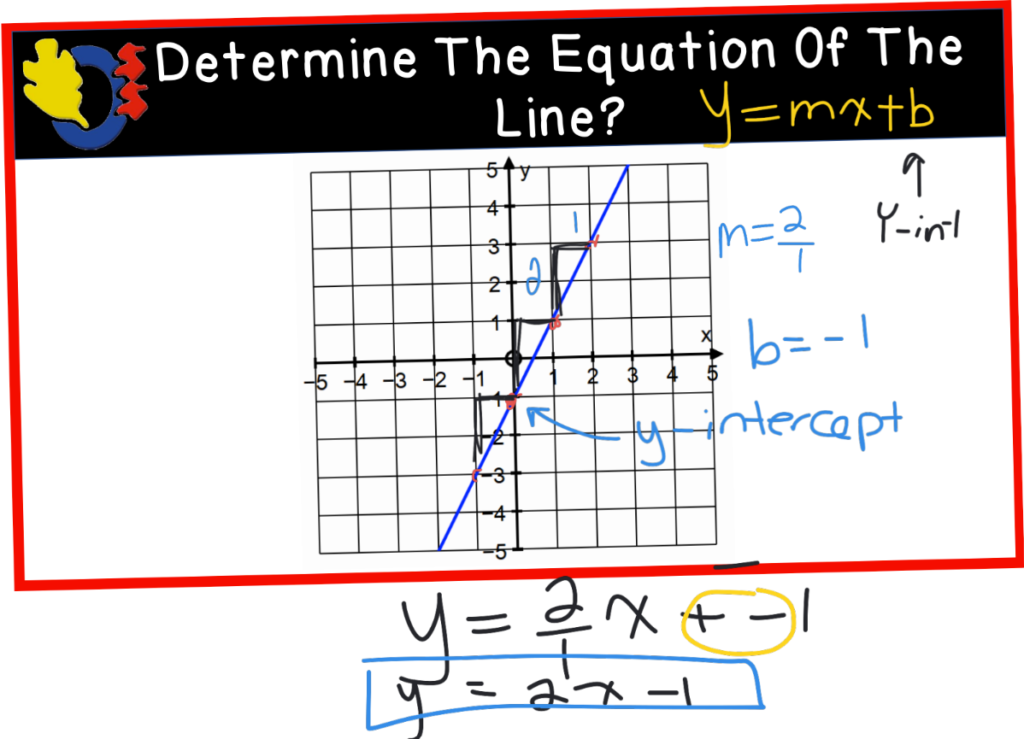
Finally, we talked about how we could figure out the equation that represents the line on the graph to the right. We drew our rate triangle to get the slope, then discussed where to find the y-intercept. We were then able to put it all together into the equation of the line in slope-intercept form or y=mx+b. We also reviewed what to do if we had an integer with a double sign.
Next we got out our devices and those that didn’t have their own device/phone used a Chromebook to work on a Desmos graphing linear relations investigation. I posted several equations on the board and asked the class to plot all three on the same grid. Once they had the lines graphed, we discussed what we noticed. We looked at examples with whole slopes, negative slopes, fractional slopes as well as different y-intercepts.
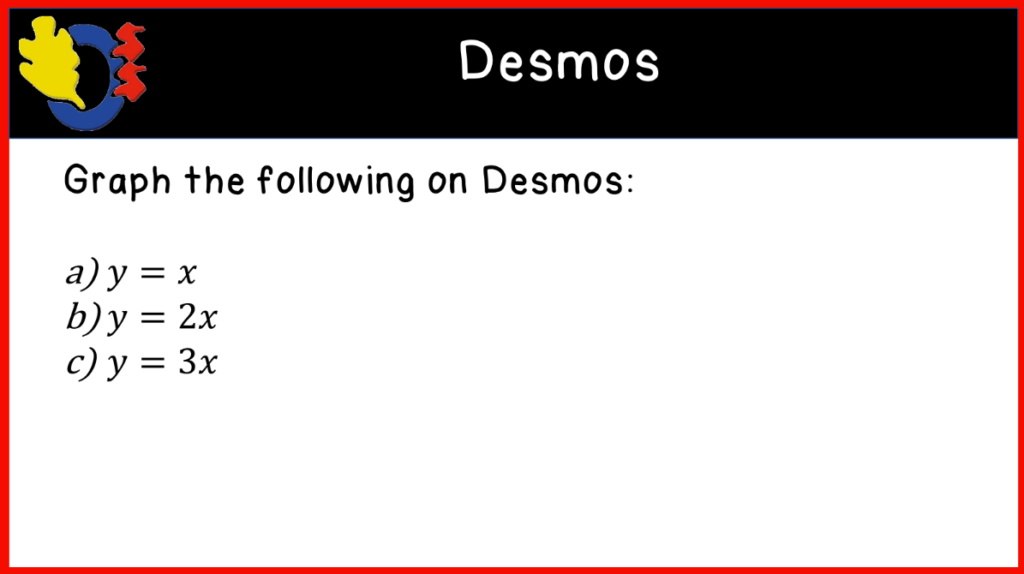
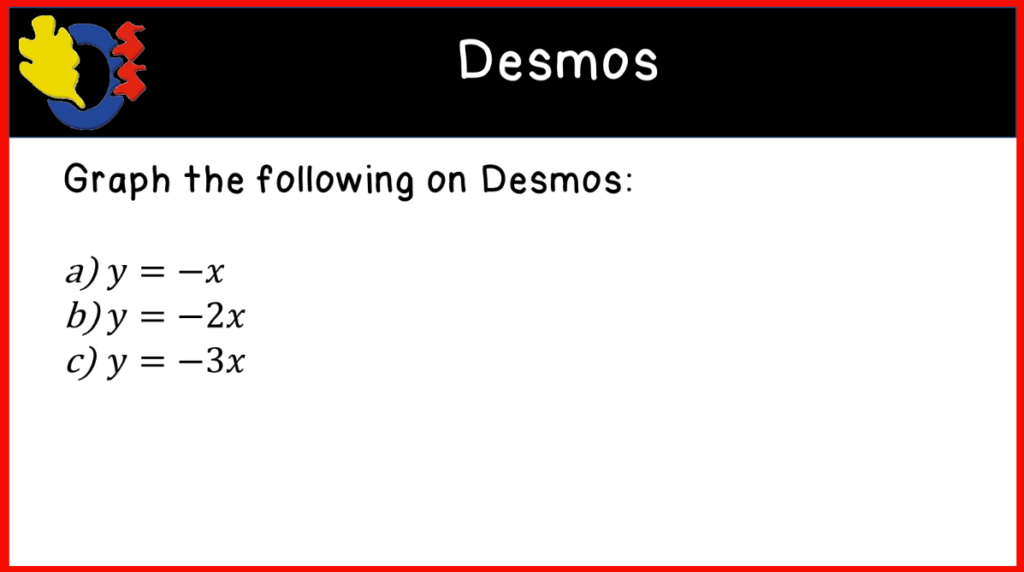
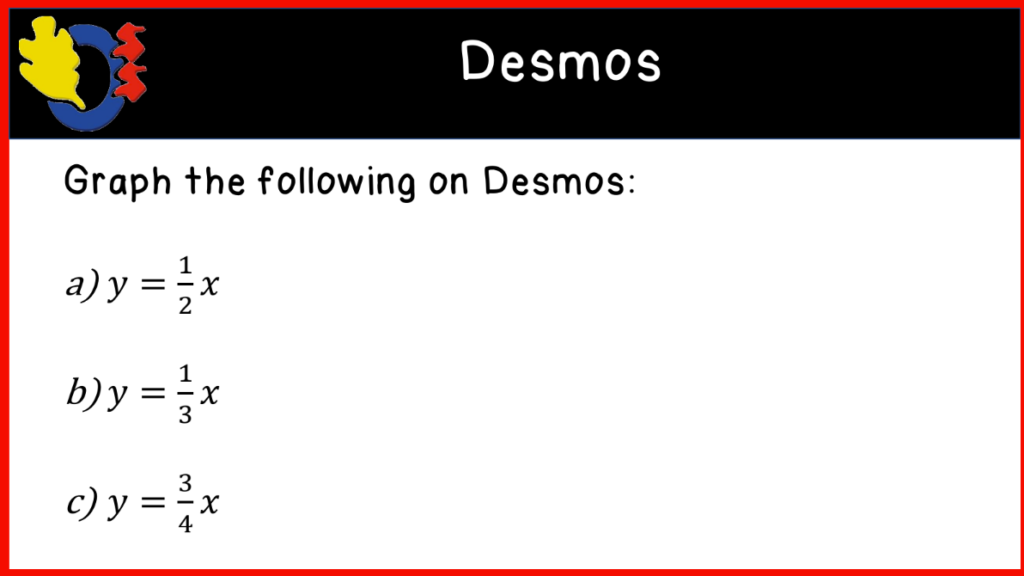
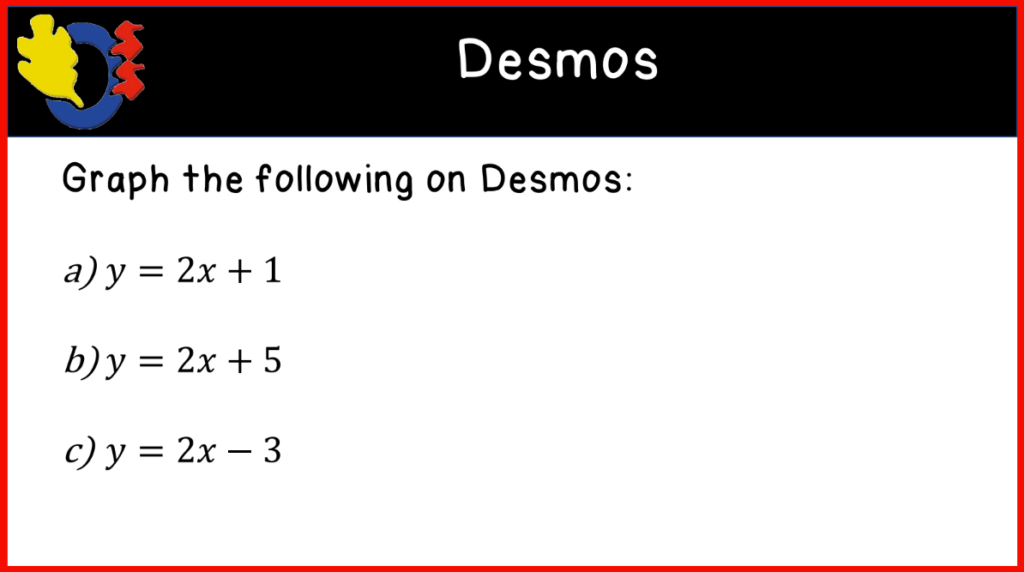
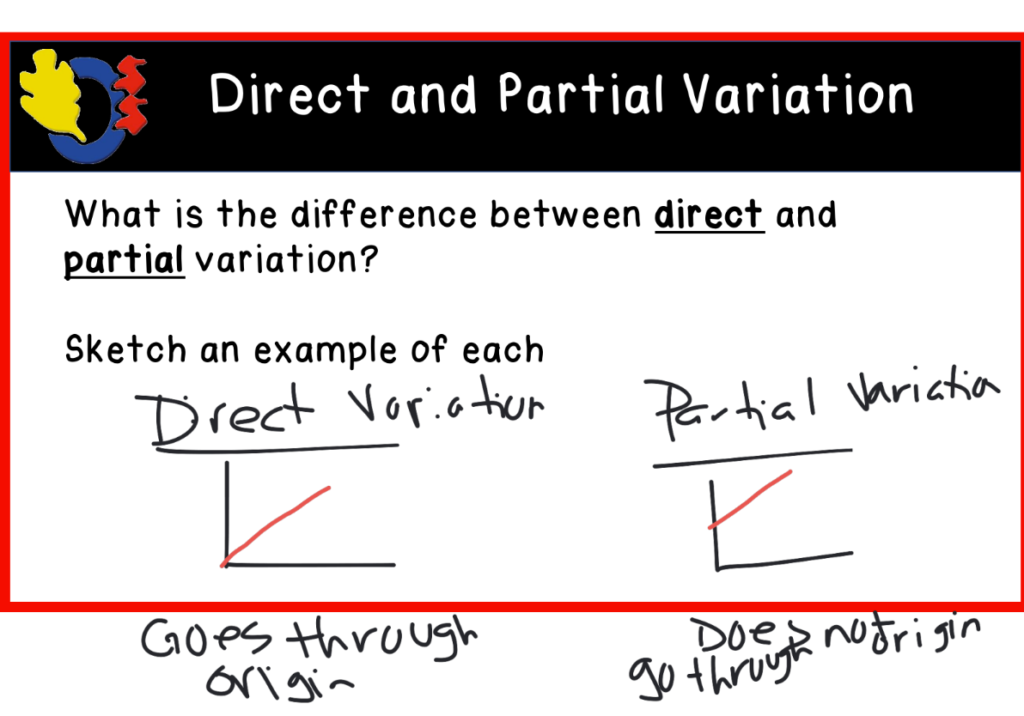
This was a great opportunity to discuss some new terminology. We talked about direct and partial variation.
Now that the investigation was complete, the students worked on filling out their CYU (check your understanding) consolidation pages.
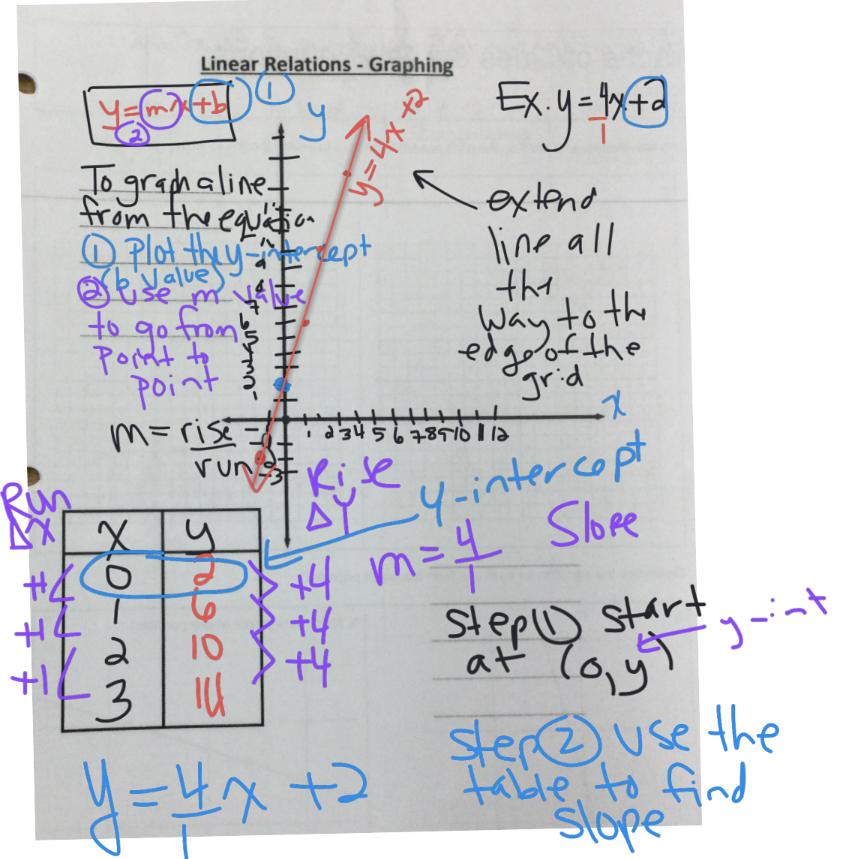
We had a bit more time left, so the beauty of spiraling is we can switch gears. We talked about how to calculate the percent of a number. Once we recalled that information, we looked at a Would You Rather Math problem.
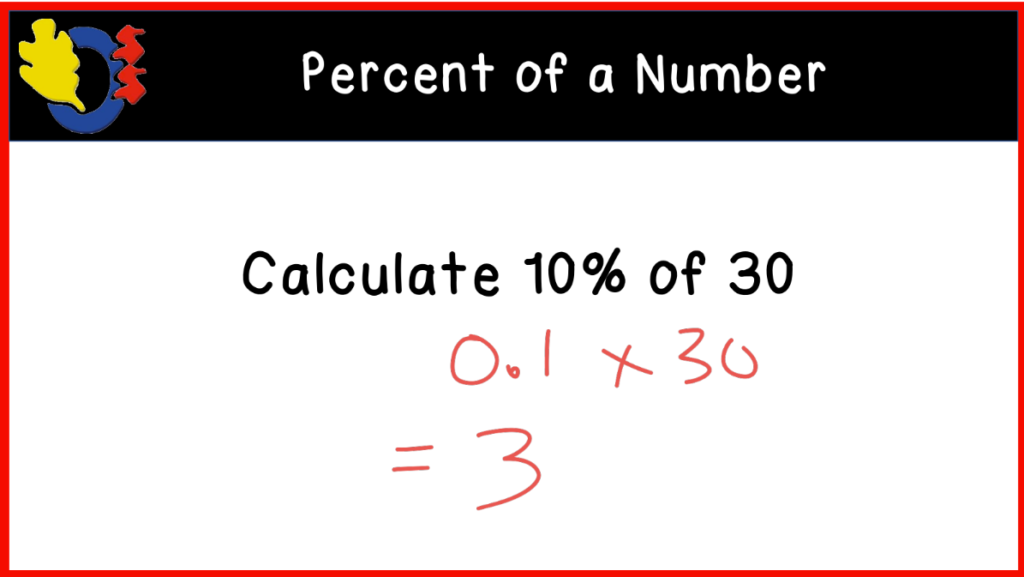

This was an excellent segue into the discussion about depreciation, which is one of the new topics in the MTH1W de-streamed grade 9 math course.

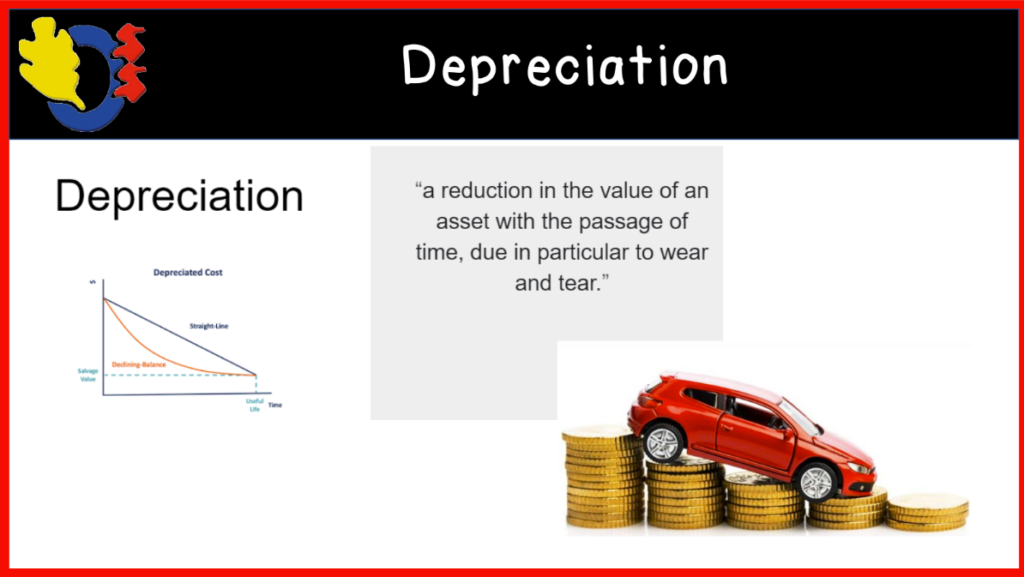

After brainstorming what depreciation was, we looked at one final Would You Rather Math problem.
This brought us to the end of the period.
I hope something here was able to help you on your teaching journey.
Have a great day!